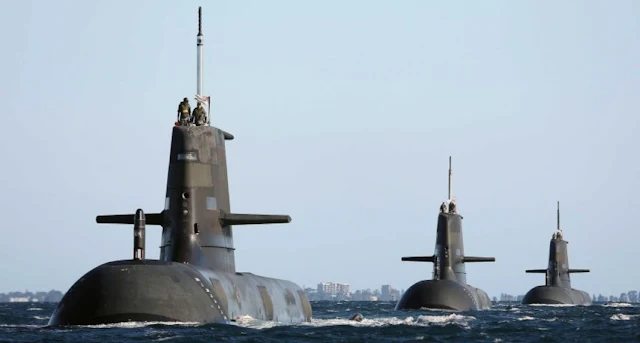 |
| A Country Owning the Most Advanced Conventional Submarine in Asia Pacific |
International Military- Alutsista in the class of conventional submarines (diesel electric) is the main weapon system that is still in use today. It is proven that many big countries such as Germany, Japan, South Korea, India, Australia are still using conventional submarines. And for the most advanced conventional submarines on the European continent, one of which is made in Germany, whose prowess is already legendary. It is proven that conventional submarines made in Germany have been used by many countries in the world.
Quoted from navalnews.com, the countries that use advanced German conventional submarines are Portugal with Type 214 and Italy with Type 212 for the European region. Then for conventional submarines made in Asia, one of them is from Japan, namely the Soryu and Taigei classes.
Moreover, in the Asia Pacific region, there are many sophisticated conventional submarines located adjacent to Indonesia but not belonging to Malaysia, Singapore and Vietnam. But made in Australia known as the Collins class.
Quoted from defense.gov.au, the Collins class is an Australian submarine that is planned to remain in service until the 2030s. That means the Collins class's operating time is expected to end in 8 years from now. And there is an issue if nuclear submarines will replace the Collins class in the future.
In addition, the Collins class was developed to meet the Australian requirements of the Swedish submarine design. As a result, the Collins class design comes from Europe, especially Scandinavian countries. It's true that the Collins class has extraordinary characteristics regarding its cruising range.
Not only cruising power, but the stealth feature is in the Collins class as its flagship. Then the advanced sensor performance system is in the Collins class which includes its internal technology. As for advanced weaponry, from torpedoes to anti-ship missiles, the Collins class also makes it deadly.
It was also explained that Australia's Collins class currently amounts to 6 units. Of the 6 Collins class units, all of them are still actively operating. The first Collins class was made in 1990. And finally the first Collins class was completed in 1993 and was on active duty in 1996.
Then the last Collins class was named HMAS Rankin which was created in 1995 and was active in 2003. In making the first Collins class until the inauguration of the last Collins class it took at least 13 years. With such a long time, the Collins class has a lot of superior technology. From this superior technology, the Collins class has been named one of the best diesel-electric submarines in the world.
Informed from seaforces.org, Collins class submarines are classified as SSG or guided missile carriers. But some classify the Collins class as a hunter submarine or SSK. With this classification, it is true that the Collins class has such ideal dimensions.
It is explained that the Collins class has a length of 77.8 meters, and a width of 7.8 meters. From these dimensions, the Collins class has a single hull and two decks. From the two decks, the Collins class weighs 3,100 tons when it comes to the surface. And 3,407 tons when submerged are characteristic of the Collins class.
Please note that the Collins class is capable of diving to a depth of more than 180 meters. There is information that this submarine is capable of diving more than 300 meters, which is one of the characteristics of its reliability.
For this reason, the Collins class has a hull made of high-tensile micro-alloy steel which is quite sophisticated. And it can carry a standard payload of 22 torpedoes. Initially the payload was a mix of Gould Mark 48 Mod 4 torpedoes and UGM-84C Sub Harpoon anti-ship missiles. The existence of the UGM-84C Harpoon in the Collins class makes this submarine capable of Submarine Launched Cruise Missile (SLCM).
In addition, it is known that the outstanding performance of the Collins class is its speed of 10 knots (19 km/h; 12 mph) when surfaced. And at the depth of the Collins class snorkel it can reach 20 knots (37 km/hour). Then when traveling at a speed of 10 knots (19 km/h; 12 mph) the Collins class has a range of 21,300 km.
And the Collins class can also cover a distance of up to 17,000 km at depth when snorkelling. Meanwhile, when fully submerged, the Collins class can cover a distance of 890 km at a speed of 7.4 km/hour. From this performance, the durability of the Collins class at sea can reach 70 days depending on the availability of logistics.
